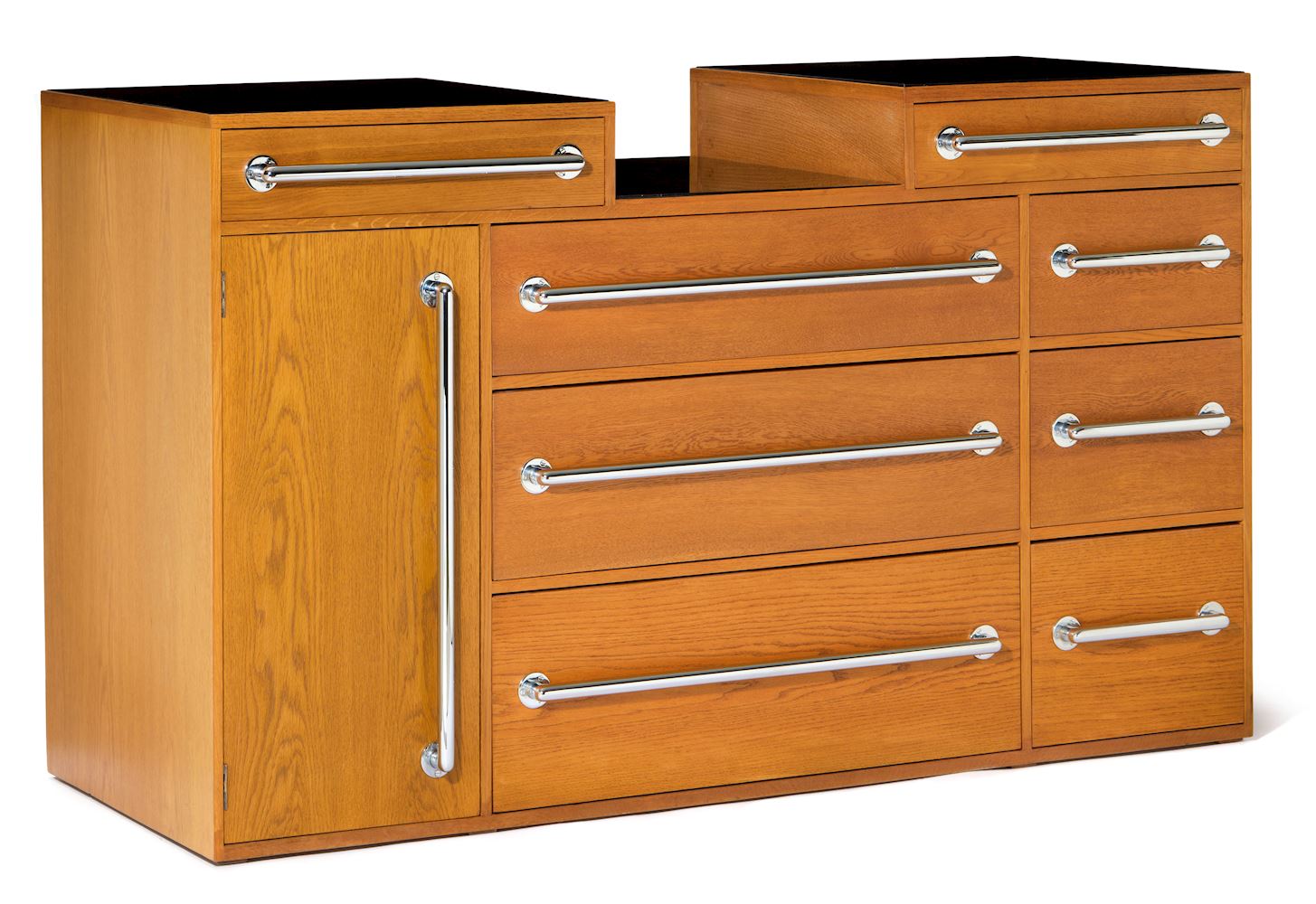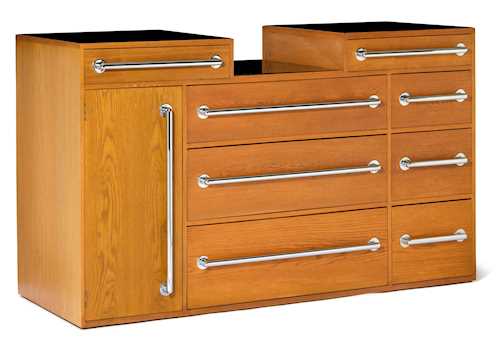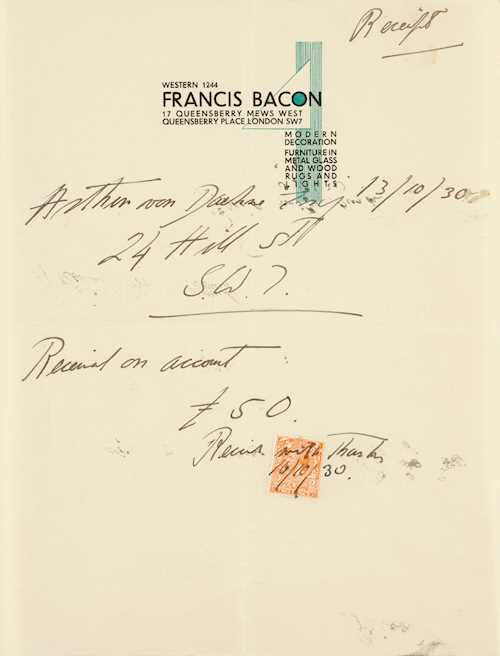
Lot 1237 - A208 Decorative Arts - jeudi, 21. mars 2024, 13h30
VERY RARE SIDEBOARD BY FRANCIS BACON (1909-1992)
Provenance
- Private collection of a German baron, acquired directly from the artist (see original receipt London, October 13, 1930), until 2005 in Brissago/Ticino, Switzerland.
- Private collection Zurich, inherited from the above baron.
Today, Francis Bacon's name is primarily associated with an unmistakably individual style of painting and crude, challenging pictorial compositions. Before the Irish-born artist was able to emancipate himself as one of the most famous visual artists of the 20th century, he occasionally worked as a designer and interior architect during his stays in Berlin and Paris from 1927 onwards. Little is known about his early phase as a designer. A certain date is 1928, when he moved into a studio in a converted garage in Queensberry Mews West, South Kensington London. Between 1929 and 1931, he designed furniture and carpets there, in a modern, cubist-inspired style. The pieces he designed were based on the modernist design language of Marcel Breuer, Le Corbusier and Eileen Gray. Furniture designed by Bacon is presented to the general public for the first time in the August 1930 issue of 'The Studio' magazine, including a similar grey/white stepped sideboard with identical chrome steel fittings. It is not known where Bacon obtained his technical knowledge or craftsmanship and who the manufacturer of the creations was. His furniture designs were largely unsuccessful, so that from 1933, discouraged by his failure, he devoted himself entirely to painting (see Luigi Ficacci. Francis Bacon. Cologne, 2017, p. 90. With illustration of an interior). Thanks to the enclosed purchase receipt, which proves the authenticity of the furniture and its attribution to the artist, we can rediscover an important relic from Francis Bacon's early work.
The handwritten invoice to the buyer of the sideboard, a German baron, shows the embossed letterhead with the studio address in Queensberry Mews West. On the front of an additional business card is the printed studio logo and a note written in pencil: Mr. Marc Dennot / Castle Hackett (...). The handwriting is different from that on the invoice, which can be assumed to be Bacon's handwriting. On the reverse of the business card we again see the same handwriting, probably by Bacon, in black pen and a sketch of the room in pencil. This sketch presumably shows the baron's living situation, ca. to give Francis Bacon an idea of the furniture to be purchased. The sideboard could therefore also be a commissioned work. How and whether the business card is actually linked to the invoice for the sideboard can no longer be ascertained. The German baron, who bought the sideboard directly from the artist while he was working in London for several years, settled in Ticino, where he remained until his death in 2005.
CHF 12 000 / 18 000 | (€ 12 370 / 18 560)
Vendu pour CHF 72 500 (frais inclus)
Aucune responsabilité n'est prise quant à l´exactitude de ces informations.






